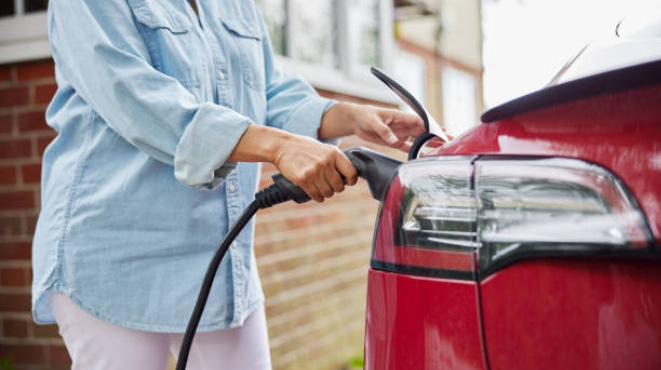FROM JARIC ELECTRICAL
Tips for getting the right solution for your electrical vehicle
If you’re thinking about buying a Tesla or any other Electrical Vehicle (EV), the next question that may occur to you is how to charge the vehicle at your home.
And while you certainly can charge an EV through your standard wall outlet, it’s much faster to charge your car using a manufacturer or third party EV charger.
Let’s take a look at the various types of EV charger available, and what you should consider when installing one in your home.
What to think about when choosing an EV charger
Of course, it’s much cheaper to charge your EV at home overnight than it is when you’re “out and about”. That’s because currently, public EV charging infrastructure is expensive to use. And having a home charger will allow you to use solar panels to reduce your costs even further.
To ensure you don’t suffer from “range anxiety”, remember that the maximum size outlet is limited to 20 amps for residential homes. While you can go up to 40 amps, this is only available on an off-peak tariff – which may only give you five to six km of driving overnight.
What size EV charger can I install in my home?
There are three basic tiers of EV charging to consider:
- Utilise one circuit for the electric car, which won’t knock off a power circuit elsewhere in your home
- Install a large dedicated circuit, or
- Upgrade to 3-phase power with a large charger.
Comparing hybrid vehicle charging to fully electric cars
The main difference between hybrid cars and fully electric vehicles is their battery size. Plugin hybrid cars have a much bigger battery, which means you might not need to install a very large charger at home.
What electrical protection is needed for your Electric Vehicle?
Storms are commonplace in South East Queensland’s summers – and you certainly don’t want your electrical vehicle destroyed by a lightning strike on your home. Even if the car is only damaged, who wants to be without an EV for weeks while it’s repaired? Fortunately, there are some steps you can take to protect it.
Install surge protection
For protection against lightning strikes during storms, install surge protection on the circuit you’ll use for your EV. This needn’t be pricey – in fact, surge protection costs around $600-$1,200.
Upgrade your home’s switchboard
Have your electrician check that your current switchboard is sufficient before installing an EV charger.
Install heat alarms
We’ve all seen the nightmare stories of EVs bursting into flames while being charged. Unfortunately, in Queensland you cannot install smoke alarms in a garage. Instead, ask your electrician about heat alarms, which detect the presence of emissions in the space.
Upgrade to three phase power
Because you’ll only achieve around 40 to 50 km of range per hour of charging, you may want to consider installing three phase power at your home. Your EV will charge much faster – plus you can put the car onto an off-peak tariff to save money.
Contact Jaric Air Conditioning for expert advice on EV charging
When you’re thinking about the right EV charger for your situation, remember that any solution shouldn’t be too small for your needs, or too large so that you get a fine from Energex!
For the right advice and expert assistance that will help you be completely confident in the arrangement of your car charger, call Jaric Electrical & Air Conditioning on 1300 452 742 or contact us online at jaricgroup.com.au.


